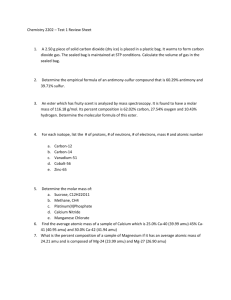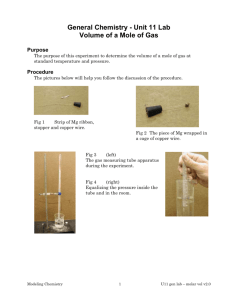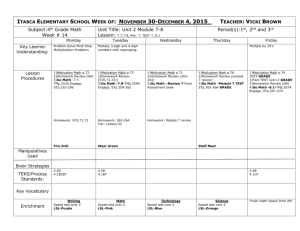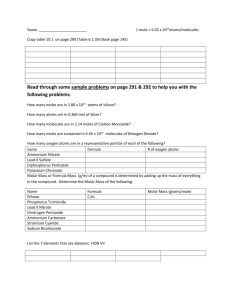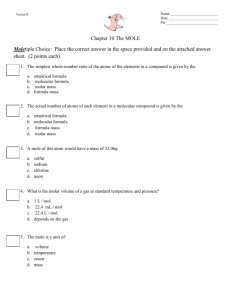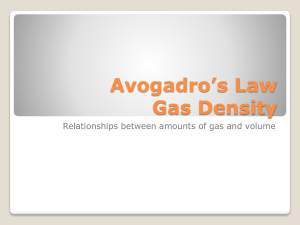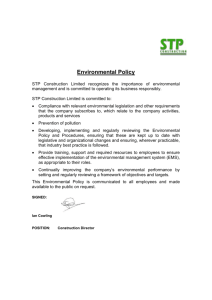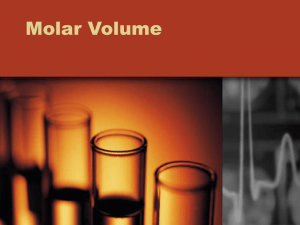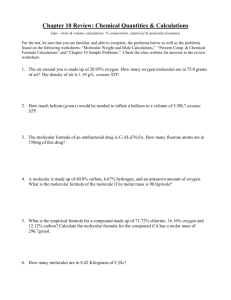Name: October 2013 Gr.11 Chemistry, Unit 2: The Mole (2) Explain
advertisement
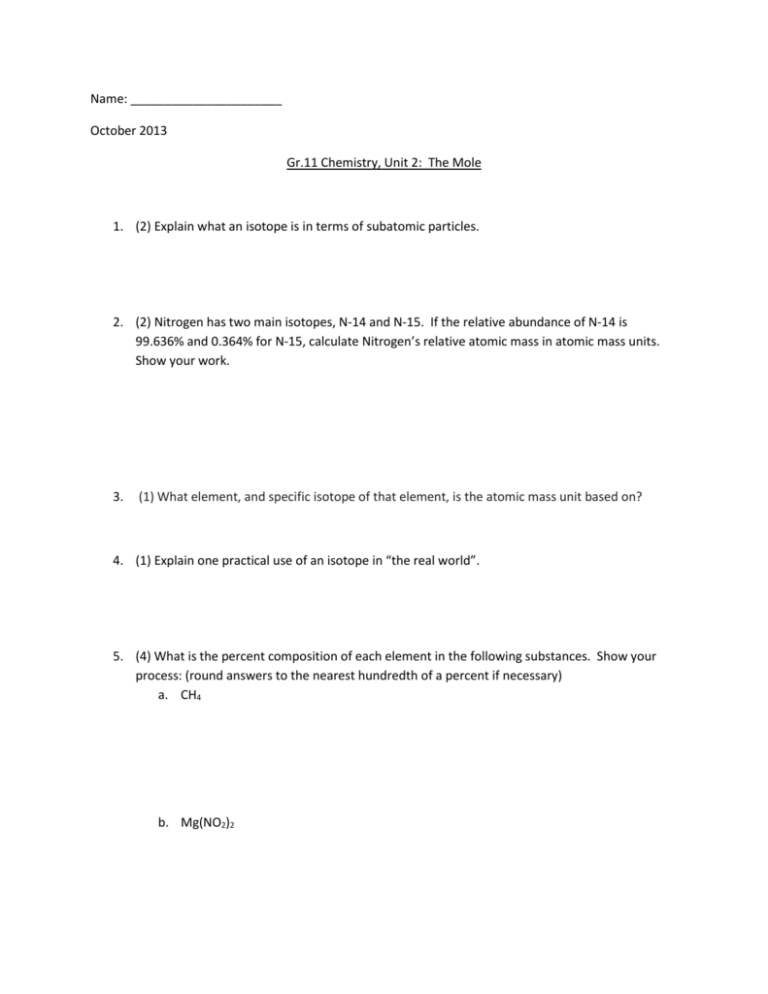
Name: ______________________ October 2013 Gr.11 Chemistry, Unit 2: The Mole 1. (2) Explain what an isotope is in terms of subatomic particles. 2. (2) Nitrogen has two main isotopes, N-14 and N-15. If the relative abundance of N-14 is 99.636% and 0.364% for N-15, calculate Nitrogen’s relative atomic mass in atomic mass units. Show your work. 3. (1) What element, and specific isotope of that element, is the atomic mass unit based on? 4. (1) Explain one practical use of an isotope in “the real world”. 5. (4) What is the percent composition of each element in the following substances. Show your process: (round answers to the nearest hundredth of a percent if necessary) a. CH4 b. Mg(NO2)2 6. (6) Find the empirical formula for each of the following substances from the percent composition given. Show your process CLEARLY! a. 15.8% carbon and 84.2% sulfur b. 38.67% potassium, 13.85% nitrogen and 47.48% oxygen 7. (3) Find the molecular formula for a substance that has an empirical formula of C2H5 and an molar mass of 60 g/mol. 8. (6) Find the molecular formula for a substance that is 46.6% nitrogen, 53.4% oxygen, and has a molar mass of 60g/mol. 9. (1) What is a mole (in chemistry) and why do chemists find it so useful? 10. (2) What is STP? 11. (2) How many molecules in 15.4 g of CH4? 12. (2) How many grams are there in 2.48 x 1024 molecules of N2? 13. (2) What is the volume of 3.54 moles of carbon dioxide @STP? 14. (2) How many moles oxygen gas do you have in 35.467 L @ STP? 15. (2) How many grams nitrogen dioxide gas do you have in 12.05 L @ STP? 16. (2) What is the volume of 20.0 g of O2 at STP? /40



